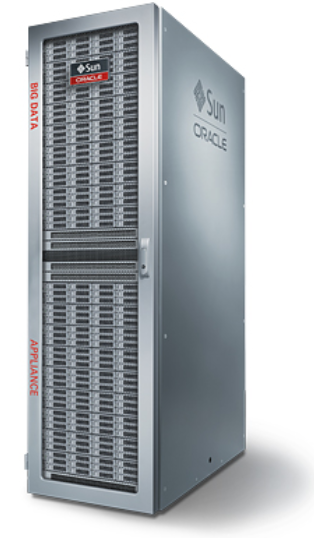
Oracle Addresses Hadoop Security with Big Data Appliance
Oracle is adding new software to its X64-based Big Data Appliance that will deliver new security capabilities for Hadoop environments. The appliance will also run a new release of its NoSQL database, which Oracle also announced at its OpenWorld conference, as well as enhanced big data connectors from the big red machine.
In just a few short years, organizations have adopted data analytic tools that open up potentially ground-breaking new ways to glean intelligence from data. The combination of Hadoop and MapReduce, for example, are enabling organizations to store and analyze vast sums of semi-structured content that were unthinkable just a decade ago.
However, the gold rush mentality of big data has caused organizations to overlook basic concepts of good data governance, including security. In the mad dash to mine valuable nuggets from the ore of semi-structured data, many organizations have simply neglected to take time to implement controls that prevent the data from getting into the wrong hands.
Oracle says it has addressed this problem in the Hadoop environment with the latest incarnation of its Big Data Appliance, a scaled-down member of its “engineered systems” of purpose-built appliances that also includes Exadata and Exalytics machines.
Specifically, Oracle is hooking its Audit Vault and Database Firewall software up to Hadoop running on its appliance. This allows organization to receive alerts whenever suspicious or unauthorized activities occur in Hadoop, Oracle says.
The Big Data Appliance’s software update also gives users access to audit reports on Hadoop activities, which is handy for regulatory compliance. It also provides support for Kerberos authentication and LDAP based authorization, which will help prevent unauthorized users and hackers from making their way into an organizations’ Hadoop environment.
 |
|
| Oracle’s Big Data Appliance X3-2 ships with 18 Sun servers in a full rack config. | |
Oracle added several other goodies to its Big Data Appliance, which it hopes will generate some attention among current and prospective organizations who value the big-name support of a tier-one systems vendor. It’s a tough road to go, considering that much of the big data software is free, open source, and runs on commodity X64 servers. (The fact that Oracle gets much of its profits from its traditional SQL database business also raises questions as to Oracle’s commitment and staying power in the hype-heavy big data world.)
On the big data connector front, Oracle is now shipping a new XQuery for Hadoop connector that allows organizations to use standard XQuery to process and transform XML documents stored in a Hadoop cluster running on the big data appliance. This will give Hadoop-On-Big Data Appliance users another way to eek some value out of their investments, without resorting to employing full-fledged, parallel-programming, Java-based data scientists.
Performance of Hadoop on the Big Red Appliance has also been enhanced in several ways, Oracle says. For starters, MapReduce jobs of all types run faster on the big appliance thanks to new routines that detect data skew and balance reducer jobs, according to the software and hardware giant. It also claims that R-based MapReduce routines now run five times faster on the Big Data Appliance, thanks to enhancements in its R Connector for Hadoop software.
On the NoSQL front, Oracle says it has bolstered performance and scalability with several new features, including parallel data scans. That’s about the extent of the enhancements to the new version of Oracle’s NoSQL database, which is at version 2.x or maybe even version 3.0–it wasn’t disclosed in Monday’s announcement.
Oracle’s NoSQL database implements a simple key-value pair data structured that supports ACID transactions and JSON documents. The Oracle NoSQL database version is available as a free community edition download, with support starting at $2,000 per year per server. It also offers an enterprise edition.
Related Items:
Oracle Gives 12c Database a Column-Oriented Makeover
SAP Brings Hadoop Closer to the Vest






























